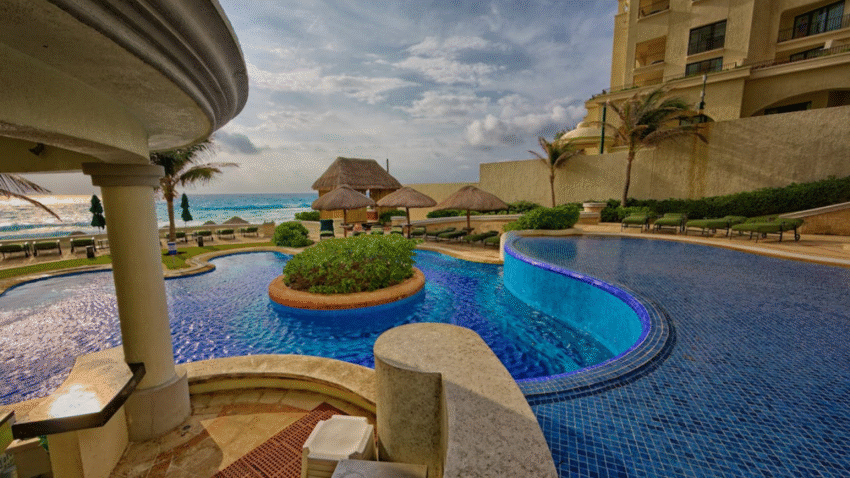Introduction
Is your pool pump making more noise than usual? A loud or rattling pump isn’t just annoying — it’s a sign that something might be wrong. In this guide, you’ll learn how to fix a noisy pool pump, including diagnosing the cause, applying practical solutions, and preventing future issues. Whether it’s a whining motor, vibrating housing, or grinding bearings, this step-by-step breakdown will help restore peace to your poolside experience.
Why Fixing a Noisy Pool Pump Matters
Your pool pump should operate with a gentle hum. If it’s making excessive noise, it could be a symptom of:
- Loose or damaged components
- Worn-out bearings or motor
- Cavitation from low water flow
- Air leaks in the suction line
- Pump not sitting level or on a solid base
Ignoring these sounds may lead to pump failure, water circulation problems, or costly repairs down the road. Fixing a noisy pump early protects your pool equipment, saves on energy, and makes your pool environment more enjoyable.
Step-by-Step Guide to Fixing a Noisy Pool Pump
Step 1: Identify the Type of Noise
Different noises indicate different problems:
- Grinding or Screeching: Usually points to worn-out motor bearings
- Humming: Could mean the motor is jammed or has a capacitor issue
- Rattling or Vibrating: Likely caused by loose parts or an unstable base
- Sucking or Gurgling: Often a sign of air in the suction line (cavitation)
💡 Tip: Record the sound to compare it against online pump noise videos to help identify the issue.
Step 2: Turn Off and Inspect the Pump
Before working on your pump:
- Turn off the power at the breaker
- Unplug the pump (if applicable)
- Wait for the system to stop completely
Now perform a basic inspection:
- Check for loose bolts or screws
- Look for vibrating hoses or fittings
- Inspect the pump lid and O-ring for air leaks
- Check if the pump is sitting on a level, solid surface
⚠️ Caution: Never open or work on an electrical motor without disconnecting power.
Step 3: Tighten and Secure Components
If the noise is coming from vibrations:
- Tighten all mounting bolts and brackets
- Ensure the pump is securely bolted to its pad
- Use rubber pads or anti-vibration mounts under the pump
- Secure loose plumbing with clamps or brackets
💡 Pro Tip: A rubber mat or foam pad under the pump base can absorb excess vibration.
Step 4: Check for Air Leaks
Air entering the pump’s suction line can cause loud gurgling or whistling sounds. Common air leak sources include:
- Cracked pump lid or O-ring
- Loose or dry O-ring (use silicone lubricant to seal)
- Leaks at the skimmer, valves, or unions
- Low water level in the pool
Fix by:
- Replacing damaged O-rings
- Tightening union connections
- Ensuring pool water level is halfway up the skimmer
Step 5: Prime the Pump Correctly
If your pump wasn’t properly primed, it may run dry or cavitate — both of which are noisy and harmful.
To prime:
- Open the pump lid and fill the basket with water
- Close the lid securely
- Open any suction valves
- Turn on the pump and watch for steady water flow
If the noise improves after priming, air was the likely issue.
Step 6: Clean the Pump Basket and Impeller
Clogs in the impeller or pump basket can lead to noisy operation and overheating. To fix:
- Turn off power
- Remove the pump lid and pull out the basket
- Clear any debris from the basket
- If noise persists, remove the pump housing and check the impeller for clogs
⚠️ Caution: Consult your owner’s manual before removing internal components.
Step 7: Lubricate or Replace Motor Bearings
If you hear grinding or screeching, your pump motor bearings may be worn out. Most pool pumps use sealed bearings that cannot be lubricated and must be replaced.
Options:
- DIY bearing replacement (advanced — requires tools and motor disassembly)
- Take motor to a repair shop
- Replace the motor or entire pump if repair isn’t cost-effective
💡 Tip: A motor showing signs of age or overheating is usually better replaced than repaired.
Step 8: Check for Electrical Issues
A loud humming or buzzing might indicate an electrical problem, such as:
- Faulty capacitor
- Jammed impeller
- Motor not receiving full voltage
To fix:
- Replace bad capacitors (usually inexpensive)
- Test voltage with a multimeter
- Make sure wires are properly connected and not corroded
If you’re unsure, consult a pool technician or licensed electrician.
Common Mistakes to Avoid
- Ignoring the Noise
Delaying repairs can lead to permanent damage and higher costs later. - Overtightening Fittings
This can cause stress cracks or leaks in plastic components. - Running a Dry Pump
Always prime the pump before restarting — running dry destroys the motor quickly. - Replacing the Entire Pump Unnecessarily
Many noise issues are caused by loose parts or air leaks — fix these before buying a new unit. - Using the Wrong Replacement Parts
Bearings, capacitors, and seals must match your pump model exactly.
Extra Tips & Pool Hacks
- Install a Timer to avoid running the pump during quiet hours or at night when noise is more noticeable
- Enclose the Pump Area with a soundproof box (leave ventilation!) for quieter operation
- Schedule Annual Maintenance to prevent buildup and bearing failure
Want to dig deeper? Read our guide on [how to prime a pool pump the right way].
Conclusion
A noisy pool pump isn’t something you have to live with. Whether it’s a simple air leak, loose fittings, or worn-out bearings, you now know how to diagnose and fix the problem step-by-step. Taking action early ensures longer pump life, better filtration, and a more peaceful backyard pool experience.
📌 Bookmark this guide to quiet your pool pump and enjoy silent swimming!
